What impresses me the most about the Samsung Galaxy S24 and S24 Plus isn’t the new Galaxy AI features, brighter screens or solid cameras. It’s the battery life. I’ve been reviewing phones for seven years, and I’ve learned that if a company wants people to be eager about buying a new phone, either make the battery last longer or lower the price. That’s it.
After a week of testing, I can say the larger batteries in the Galaxy S24 and S24 Plus have no trouble plowing through a long day of use on a single charge. The S24 Plus in particular made it two days.
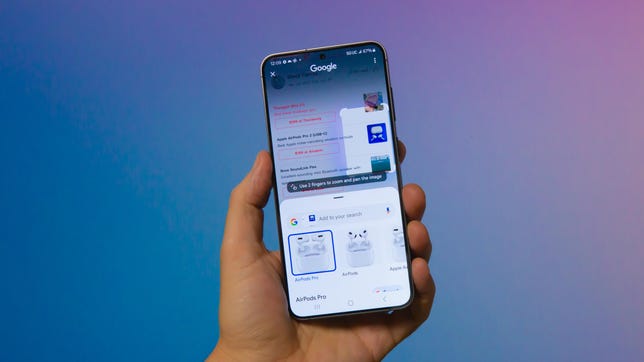
9.0
Samsung Galaxy S24
Like
Longer battery life
Longer software support
Brighter screen
Circle To Search
Don’t like
Telephoto images are just OK
AI features are hit-or-miss

9.0
Samsung Galaxy S24 Plus
Like
Larger, brighter, higher resolution screen
Longer battery life
Longer software support
Incredible performance
Don’t like
Camera performance doesn’t match price
AI features feel experimental
The Pixel 8 Pro exists
While Samsung didn’t lower the S24 and S24 Plus’ prices, it did raise the barrier of entry for the Galaxy S24 Ultra to $1,300. That makes the $1,000 Galaxy S24 Plus, which has almost everything the Ultra does, shine brighter. The S24 Plus isn’t a replacement for the S24 Ultra, but it’s a far better value for the price. Nor is the Plus just a bigger version of the $800 Galaxy S24, giving it an awkward aura that any middle child can relate to.
During my time with the S24 and S24 Plus, I had a group chat in three different languages (English, French and Spanish), took photos to Monty Python-levels of ridiculous with new editing tools, played video games and participated in a Zoom video call for work. (Hey, it’s not all glamorous reviewing a phone.) Most of these experiences weren’t unique or new, but the emphasis Samsung placed on the new AI features is actually significant, even if the true payoff is years down the line.
Read more: Best Android Phone of 2024
The S24 and S24 Plus are wonderful, well-built phones that are excellent right out of the box just as the nearly identical S22 and S23 were before it. This similarity to the S22 and S23 can be viewed as either a strength, because the design reflects three years of refinements, or a weakness, because features like the camera hardware are essentially identical to what came out in 2022. But all of this is overshadowed by the great battery life. You’ll never hear anyone complain about getting too much battery life.
If you’re interested in snagging either phone, Samsung has a number of Galaxy S24 series trade-in deals that can drop the base price to $250 for the S24 and $450 for the S24 Plus.
Galaxy S24 series pricing
Galaxy S24 series pricing
| Phone | Storage + RAM | US Price | UK Price | AU Price |
|---|---|---|---|---|
| Galaxy S24 | 128GB + 8GB | $800 | £799 | NA |
| Galaxy S24 | 256GB + 8GB | $860 | £859 | AU$1,399 |
| Galaxy S24 | 512GB + 8GB | NA | NA | AU$1,599 |
| Galaxy S24 Plus | 256GB + 12GB | $1,000 | £999 | AU$1,699 |
| Galaxy S24 Plus | 512GB + 12GB | $1,120 | £1,099 | AU$1,899 |
| Galaxy S24 Ultra | 256GB + 12GB | $1,300 | £1,249 | AU$2,199 |
| Galaxy S24 Ultra | 512GB + 12GB | $1,420 | £1,349 | AU$2,399 |
| Galaxy S24 Ultra | 1TB + 12GB | $1,660 | £1,549 | AU$2,799 |
Design where it matters
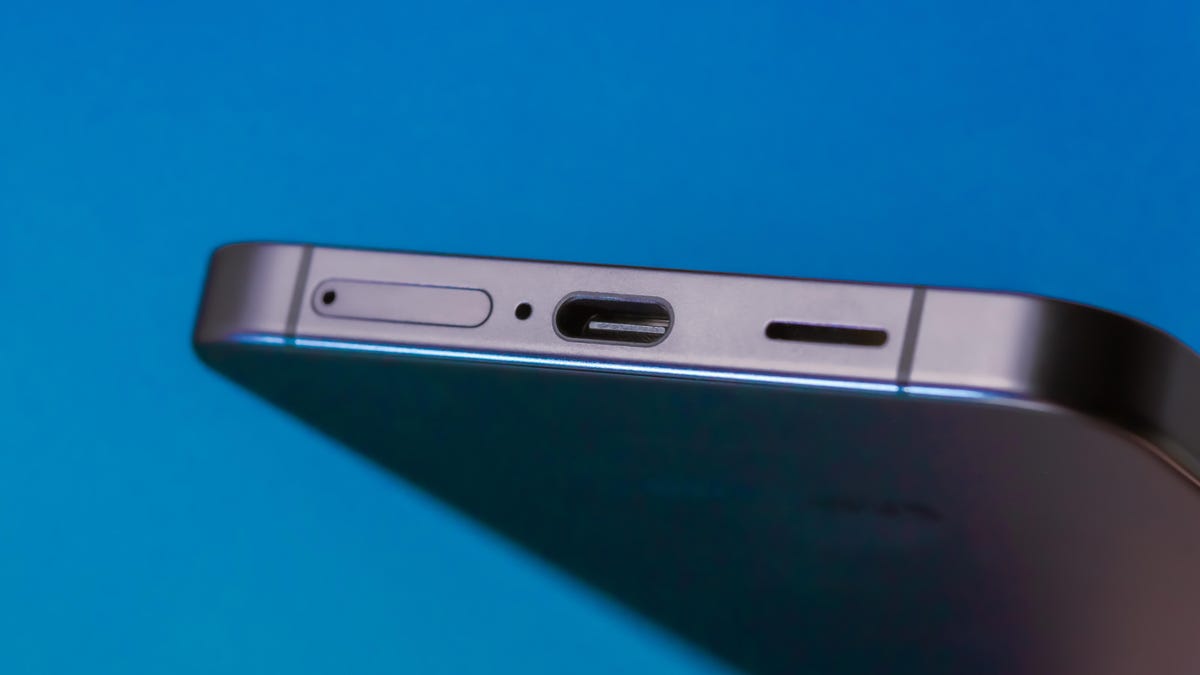
Samsung Galaxy S24 Plus’s SIM card tray, USB-C port and speaker.
Both phones kept the squared-off aluminum design with rounded corners from last year’s S23 and S23 Plus. The S24 and S24 Plus are taller, but you’d have to be Ant-Man or Rick Moranis to notice. The miniscule height addition accommodates new slightly larger displays (0.1 inches bigger): 6.2-inch screen on the S24 and 6.7-inch one on the S24 Plus. Compare that to the 6.8-inch screen on the S24 Ultra.
Like the S24 Ultra, both screens reach a peak brightness of 2,600 nits. I found the displays were easy to view whether taking a photo outdoors under direct sunlight or in a bar with friends checking the score of the Warriors/Lakers game with increasing disappointment. I haven’t used the OnePlus 12 or its 4,500-nit display, but the screens on these phones are plenty bright.
The S24 Plus’ screen has a higher resolution and can max out at QuadHD, the same resolution as the Ultra. In fact, since the S24 Plus has a smaller display than the Ultra, the Plus actually has a higher pixel density. You can’t see the difference, but it’s still a point in the Plus’ favor.
Whether it was watching Barbie and Escape From New York (a pairing that makes more sense than you think) or just touching up a photo that I took of the San Francisco Chronicle building, the Plus’ new screen makes everything look sharp with great clarity and color accuracy. I really noticed this while reading articles; text popped with contrast, even at dimmer brightness levels.
A Galaxy AI future

Circle to Search
I can’t remember two letters that have gotten more hype recently than AI. Artificial intelligence is nothing new, but it’s a generic term. It’s a bit like asking someone what they’re wearing only for them to reply, “clothes.” AI covers a multitude of implementations from simple algorithms and machine learning to the generative-AI which is behind services like ChatGPT and Dall-E.
Likewise AI shows up in a variety of ways on the S24 and S24 Plus. Some of it is made by Samsung, others by Google. Some of the AI features require an internet connection, while others are performed entirely on-device.
Out of every feature I tried, Circle To Search is the most polished and compelling. It lets you search for anything on the screen just by circling it with your finger. For example, I saw a photo of a friend on Instagram and wanted to know what boots they had on. So I pressed the home button for a second, which triggered a transparent sparkling filter to overtake the screen. Once I circled the boots, a bunch of search results for Red Wing Iron Ranger boots popped up.
If you’ve used a phone for a while you might remember a time when pull-to-refresh wasn’t a thing. And then one day it was everywhere. I feel the same will be true about Circle to Search. It works well and isn’t only on the S24 series but on the Pixel 8 and 8 Pro and will come to the S23 line as well.
Like pull-to-refresh, I wouldn’t be surprised to see Circle To Search make it to every phone, even the iPhone.
The Samsung Galaxy S24 and S24 Plus Looks Sweet in Aluminum
See all photos
The translation tools were also impressive, even though language translation itself isn’t new to phones. But the implementation here is compelling, and the “new” angle is that it’s done on device. I had a phone call translated in real time between myself, an English speaker and a friend speaking Spanish. The act of pausing and waiting for the translation to be delivered by an AI voice took getting used to. No, I don’t work for the UN, but it certainly felt like I could with this. The translation worked well enough, but there were tells that it had been done by AI. Grammatically, words would sometimes get flipped in a Yoda-like way.
I found the text message translation more useful. The interface looks clean and is intuitively built into the keyboard. As I mentioned in the intro, it had no problem handling multiple languages in a single thread. The accuracy was better, according to my friends (one who spoke Spanish and the other French), and my guess is that it’s because we’re staying in the realm of text.
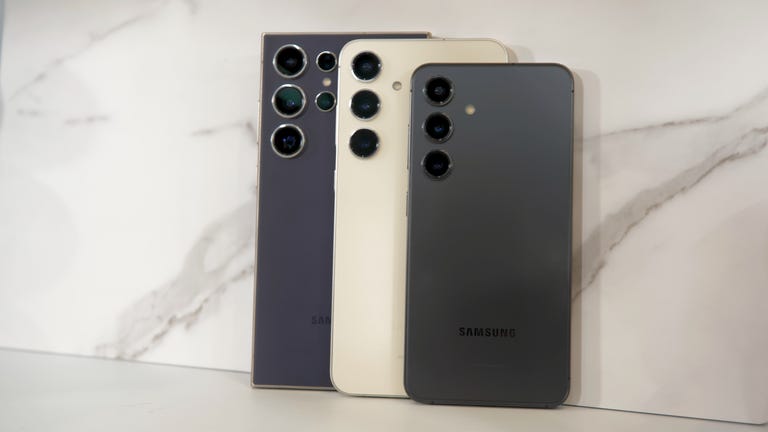
Watch this: Samsung Reveals Its New S24 Series Phones and Their AI Chops
On the whole, none of these new AI-powered tools are the reason to buy this phone (or really any phone). We’re still in the generative AI phone germination phase, which should naturally improve over time as more people use these tools. But I think some of these features are useful enough right now to appeal to everyday users and not just tech enthusiasts.
Recently, Samsung generated its own questions around the future of Galaxy AI. Fine print on the manufacturer’s website hints that after two years, Samsung might charge for the features. What’s shady to me isn’t that AI-powered tools might be the next frontier for subscription revenue, but that Samsung left it to journalists to discover the possibility in fine print. What are ya, Samsung? An ad for an ’80s used car dealership?
I highlight more AI-powered features below in the camera section, but for a deeper look read CNET’s Lisa Eadicicco’s Galaxy AI breakdown story.
Battery and performance are where it’s at

Samsung Galaxy S24 in marble gray and the S24 Plus in onyx black.
All three new Galaxy phones have a Snapdragon 8 Gen 3 chip, which when combined with 8GB of RAM on S24 and 12GB on the Plus yielded peppy performance. The under screen fingerprint reader is blazing fast to unlock, the camera app opens like a spring that’s been sprung.
Gaming is fantastic, with both phones handling everything from Mario Kart to Diablo Immortal to Genshin Impact. The S24 did get warm to the touch faster than than the Plus, but neither became too hot to hold. In benchmark testing, both phones are right up there with the Ultra, Asus ROG Phone 8 Pro and iPhone 15 Pro max, even besting some of them. The regular base S24 unexpectedly scored very high.
Geekbench v.6.0
Samsung Galaxy S24 2,255 6,875Samsung Galaxy S24 Plus 2,247 6,815Samsung Galaxy S24 Ultra 2,202 6,721Asus ROG Phone 8 Pro 2,252 6,946Apple iPhone 15 Pro Max 2,947 7,364
- Geekbench v.6.0 single-core
- Geekbench v.6.0 multicore
3DMark Wild Life Extreme
| Score | fps | |
| Samsung Galaxy S24 | 4,752 | 28.46 |
| Samsung Galaxy S24 Plus | 4,808 | 28.79 |
| Samsung Galaxy S24 Ultra | 4,415 | 26.4 |
| Asus ROG Phone 8 Pro | 5,195 | 31.09 |
| Apple iPhone 15 Pro Max | 4,193 | 25.1 |
The S24 series runs on Android 14, and perhaps the sleeper feature on these phones is that Samsung promises seven years of major OS updates and software support. That means you could hold on to the Galaxy S24 until 2031 and still have an up-to-date version of Android on the phone. Though I imagine you’d likely need a battery replacement before then.
The S24 and S24 Plus have stable software right out of the box. That hasn’t been the case with many of the other phones I’ve reviewed over the past year. The iPhone 15 series experienced overheating because of iOS 17 which has since been remedied.
Like the screens, the phones’ batteries got bigger. The S24 now has a 4,000-mAh battery (a 100-mAh increase over the S23), while the S24 Plus has a 4,900-mAh battery that’s 200-mAh larger than S23 Plus’ battery. The Plus’ battery capacity is also just 100-mAh shy of the S24 Ultra’s 5,000-mAh battery, in yet another sign of the closer overlap between the two.
The larger batteries bring a small but noticeable improvement, which is no doubt helped by the efficiency of that new Snapdragon chip. In everyday life, this shows up in the S24 starting at 6 a.m. with a full battery and at 11 p.m. having 25% left. And that was a day of medium-to-heavy use over T-Mobile’s 5G and with the screen often being set to max brightness for photo and video shoots for the review.
In the week I had the S24 Plus, it lasted two days on a single charge, twice ending the second day at 11% and 9% as I highlighted in my early hands-on story. In CNET’s streaming test, where each phone’s battery is charged to 100% and we stream a video over Wi-Fi for 3 hours, checking on the results every hour, both phones outlasted S23 models and have been outdone this year only by the OnePlus 12.
Streaming video battery test results
| After 1 hour | After 2 hours | After 3 hours | |
| OnePlus 12 (QHD+, 120Hz) | 100% | 100% | 95% |
| Samsung Galaxy S24 Plus (QHD, 120Hz) | 97% | 91% | 87% |
| Samsung Galaxy S24 (FHD+, 120Hz) | 97% | 91% | 86% |
| Samsung Galaxy S23 (FHD+, 120Hz) | 95% | 88% | 81% |
| Samsung Galaxy S23 Plus (FHD+, 120Hz) | 95% | 90% | 84% |
| Asus ROG Phone 8 Pro (FHD+, 165Hz) | 94% | 84% | 75% |
It’s worth noting that CNET’s review of the Galaxy S23 highlighted the improved battery life over the S22. And it’s remarkable that Samsung steadily improved the regular S model to go from a poor battery life in 2022 to a very good battery life in just two years.
Both phones have fast charging but don’t come with the necessary power brick. The S24 maxes out at 25 watts, and over 30 minutes the battery went from empty to 51%. The S24 Plus had similar results with a 45-watt charger (its maximum) and went from zero to 50% in the same time.
I still have more battery and charging tests to run, including for the 15-watt wireless charging that both support. But I have been absolutely impressed so far.
Cameras: the same
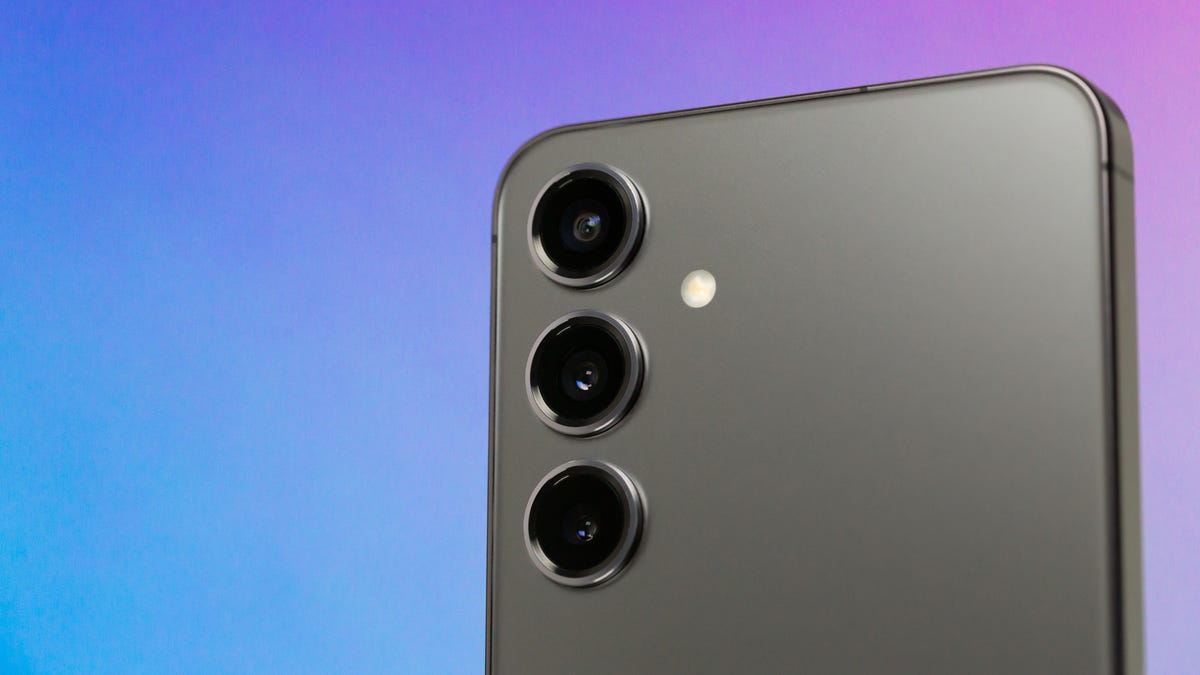
The Galaxy S24 Plus’ camera array.
Both phones have the same cameras on the back as the S23 and S23 Plus: a trio of wide, ultrawide and 3x telephoto lenses. The main camera has a 50-megapixel sensor and can capture 50-megapixel or 12-megapixel photos. The ultrawide and telephoto have a 12-megapixel and 10-megapixel sensor respectively and can capture 12-megapixel snaps, which makes me curious about where the tele is getting those extra 2 megapixels.
In her S23 and S23 Plus last year, CNET’s Lisa Eadicicco noted that the cameras were largely the same as the one on the S22 and S22 Plus. And that is definitely the case here with the S24 and S24 Plus.
In good lighting, photos look great with a decent dynamic range (the difference between the brightest and darkest parts) and image quality. But in mixed or dim lighting when night mode isn’t triggered, details look soft and processed. Take a look below.

Galaxy S24 portrait mode.

Galaxy S24 Plus main camera.

Galaxy S24 main camera.

Galaxy S24 Plus 3x telephoto camera.
When it comes to camera quality, the Galaxy S24 and S24 Plus can keep pace with the Pixel 8 and iPhone 15 but barely. Take a look below at photos I took of an espresso bar at Four Barrel Coffee in San Francisco with the Pixel 8, iPhone 15 and S24 Plus. It was dim enough to challenge the cameras on all three phones while not dark enough to activate night mode.
All three photos look good. The Pixel 8 and S24 Plus exposed their photos similarly and looked the closest to real life. The iPhone 15 brightened everything up, which results in a nice-looking photo but also throws off the color temperature. In terms of details (look at the coffee beans in the hopper), the S24 Plus’s photo looked a bit soft, while the Pixel 8’s image was a bit over sharpened, and the iPhone 15’s snap is somewhere in the middle.
Galaxy S24 Plus main camera.
Pixel 8 main camera.
iPhone 15 main camera.
These results bode well in particular for the regular S24. But with a $1,000 price tag, and competing against the likes of the Pixel 8 Pro and iPhone 15 Pro, it’s hard to be excited about what the S24 Plus offers in terms of photography. It’s definitely capable, but is not the best, nor does it come close to what’s considered to be the best cameras on phones today. And that could be why the Galaxy S24 Ultra exists with its newer and higher resolution 200-megapixel main camera.
Cameras: the new-ish
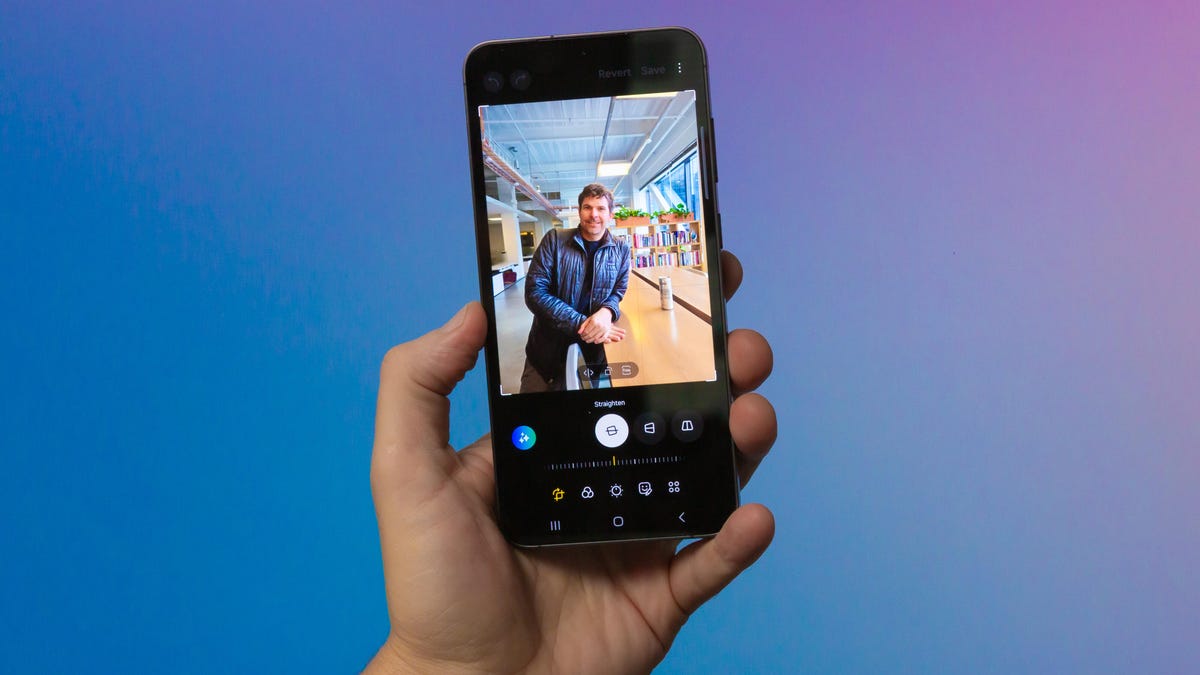
The S24 series has AI-powered editing tools.
But wait, there’s more. The Galaxy S24 and S24 Plus have a mix of on-board and cloud editing tools for photography and videos. The AI-powered tools improve the image quality and help fix aspects of the photos I take. And these tools offer a glimpse at how AI could help phones take better photos as they get older.
In the Gallery app, I can tap and hold on any video while it’s playing and turn it instantly into slow-mo (the AI generates and adds frames to the video). The experience is fun and like the saying goes, everything looks better in slow motion.
Then there’s the over-the-top Generative Edit (similar to the Pixel 8’s Magic Editor and based on the same underlying Google technology) that can delete objects and people from a photo and fill in the empty space. I have yet to see a flawless result, as there’s always a visible remnant or halo indicating that something is off. I can use the same tool to move objects and people, even changing their size, which is just fun and ridiculous.
Notice the corners on the table. Can you tell which corner had the coffee cup on it originally?
I find that mundane fixes are the most useful. I can use the same Generative Edit tool to straighten photos. I don’t like Dutch Angles except in Hitchcock films, Terry Gilliam movies and, of course, Power Rangers. I enjoy leveling a photo’s horizon, which on most phones usually means cropping in to get the desired result. On the S24 and S24 Plus Generative Edit can fill in the parts of a photo, beyond the frame that weren’t even there eliminating the need to crop in. The results are good; see below.
Can you tell the edges of the photo were generated by AI?
The Gallery app has another trick. I can swipe up to see a photo’s metadata and little buttons/tags appear with recommendations to fix things. Nearly every photo seems to get a “remaster” tag, which in my testing means brightening parts of the photo.
The “erase reflections” fix works well enough. Take a look at the two photos below, the reduced light glare is noticeable but on the results can sometimes be hit-or-miss. The tool should really be called “reduce reflections” instead.

The original photo.

After the reflections were reduced.
On the whole, the AI photo and video features feel more experimental than dependable.
Galaxy S24 and S24 Plus final word
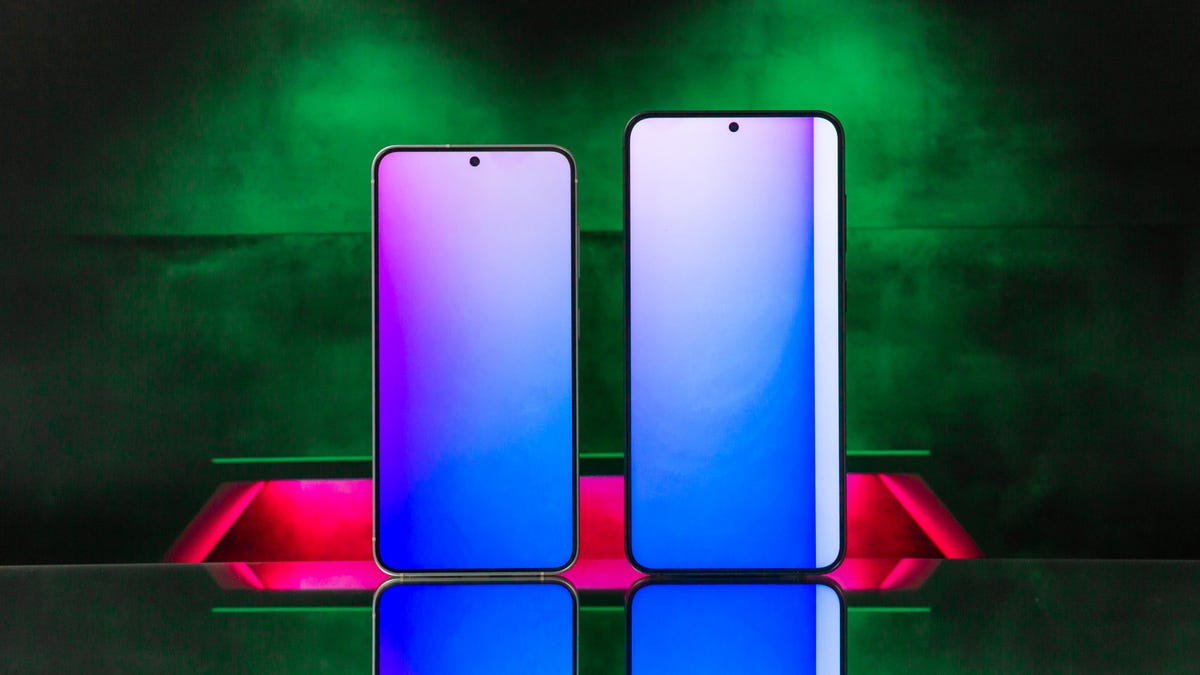
Samsung Galaxy S24 and S24 Plus
After days of testing the S24 and S24 Plus by playing games, texting and calling in multiple languages, taking photos, recording videos and trying out all that Galaxy AI has to offer, I’m happy to say both these phones are outstanding. Samsung didn’t reinvent the phone, but it did take two great phones and make them better.
The challenge for the S24 Plus is that Google’s Pixel 8 Pro has the same price and slightly better cameras. I do think the S24 Plus is an overall better phone in nearly every other respect, even software, which has been rock solid in my testing.
And the challenge for the S24 is that you can get a OnePlus 12 for the same price or save $100 and get a Pixel 8. I’ve used both the Pixel 8 and S24 and it’s hard to say one is definitely better than the other. The S24 has a more mature design, a better build and more stable software at the time I’m writing this. The Pixel 8 is better at photos and offers unique features like calling screening.
If you’re on a Galaxy S21 or S21 Plus and are feeling inclined to upgrade, now is the time. At the end of the day, the Galaxy S24 and S24 Plus have great battery life, impressive performance, seven years of software support and some of its Galaxy AI features show promise, but I expect more from the S24 Plus’ camera given its $1,000 price.
Samsung Galaxy S24 lineup specs compared
| Samsung Galaxy S24 | Samsung Galaxy S24 Plus | Samsung Galaxy S24 Ultra | |
| Display size, tech, resolution, refresh rate | 6.2-inch AMOLED; 2,340×1,080 pixels; 1-120Hz adaptive refresh rate | 6.7-inch AMOLED; 3,120×1,440 pixels; 1-120Hz adaptive refresh rate | 6.8-inch AMOLED; 3,120×1,440 pixels; 1-120Hz adaptive refresh rate |
| Pixel density | 416 ppi | 509 ppi | 501 ppi |
| Dimensions (inches) | 5.79 x 2.78 x 0.3 in | 6.24 x 3 x 0.3 in | 6.40 x 3.11 x 0.34 in |
| Dimensions (millimeters) | 147 x 71 x 7.6 mm | 158 x 76 x 7.6 mm | 163 x 79 x 8.6 mm |
| Weight (grams, ounces) | 168 g (5.93oz) | 197 g (6.95 oz) | 233 g (8.22 oz) |
| Mobile software | Android 14 | Android 14 | Android 14 |
| Camera | 50-megapixel (wide), 12-megapixel (ultrawide), 10-megapixel (telephoto) | 50-megapixel (wide), 12-megapixel (ultrawide), 10-megapixel (telephoto) | 200-megapixel (wide), 12-megapixel (ultrawide), 10-megapixel (3x telephoto), 50-megapixel (5x telephoto) |
| Front-facing camera | 12-megapixel | 12-megapixel | 12-megapixel |
| Video capture | 8K | 8K | 8K |
| Processor | Qualcomm Snapdragon 8 Gen 3 | Qualcomm Snapdragon 8 Gen 3 | Qualcomm Snapdragon 8 Gen 3 |
| Storage and RAM | 8GB RAM + 128GB, 256GB | 12GB RAM + 256GB, 512GB | 12GB RAM + 256GB, 512GB, 1TB |
| Expandable storage | None | None | None |
| Battery | 4,000 mAh | 4,900 mAh | 5,000 mAh |
| Fingerprint sensor | Under display | Under display | Under display |
| Connector | USB-C | USB-C | USB-C |
| Headphone jack | None | None | None |
| Special features | 2,600-nit peak brightness; 7 years of OS and security updates; 5G (mmWave); IP68 water and dust resistance; wireless PowerShare to charge other devices; 25W wired charging (charger not included); Galaxy AI; Wi-Fi 6E | 2,600-nit peak brightness; 7 years of OS and security updates; 5G (mmWave); IP68 water and dust resistance; wireless PowerShare to charge other devices; 45W wired charging (charger not included); Galaxy AI; Wi-Fi 6E | Titanium frame, 2,600-nit peak brightness; 7 years of OS and security updates; 5G (mmWave); IP68 water and dust resistance; wireless PowerShare to charge other devices; integrated S Pen; UWB for finding other devices; 45W wired charging (charger not included); Galaxy AI; Wi-Fi 7; Gorilla Glass Armor cover glass |
| US price starts at | $800 (128GB) | $1,000 (256GB) | $1,300 (256GB) |
| UK price starts at | £799 (128GB) | £999 (256GB) | £1,249 (256GB) |
| Australia price starts at | AU$1,399 (256GB) | AU$1,699 (256GB) | AU$2,199 (256GB) |
How we test phones
Every phone tested by CNET’s reviews team is actually used in the real world. We test a phone’s features, play games and take photos. We examine the display to see if it’s bright, sharp and vibrant. We analyze the design and build to see how it is to hold and whether it has an IP-rating for water-resistance. We push the processor’s performance to the extremes, using standardized benchmark tools like GeekBench and 3DMark as well as our own anecdotal observations navigating the interface, recording high-resolution videos and playing graphically intense games at high refresh rates.
All the cameras are tested in a variety of conditions, from bright sunlight to dark indoor scenes. We try out special features like night mode and portrait mode and compare our findings against similarly priced competing phones. We also check out the battery life by using the phone daily as well as running a series of battery drain tests.
Editors’ note: CNET is using an AI engine to help create some stories. For more, see this post.

